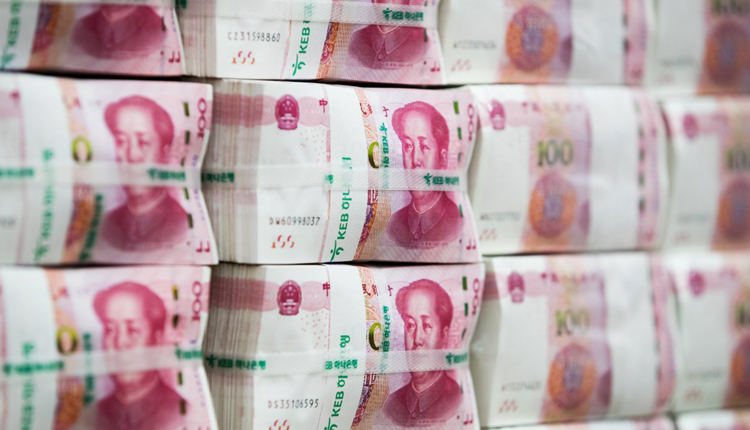China’s Yuan midpoint set to its lowest weakest since April 2008
China’s central bank set the official reference rate for the Chinese currency at 7.0039 yuan per dollar — the weakest level since April 21, 2008.
Investors are watching the currency closely after the currency breached the important 7-yuan-per-dollar level on Monday. That prompted the U.S. Treasury department to label Beijing a currency manipulator.
It was the first time since the global financial crisis in 2008 that the midpoint was set weaker than 7 per dollar, according to Reuters.
Economists polled by Reuters had expected the People’s Bank of China to set the yuan at 7.0205 per dollar on Thursday. The yuan midpoint was set at a stronger level of 6.9996 per dollar on Wednesday.
A weaker yuan makes Chinese exports more attractive, and the Trump administration has frequently complained it’s giving Beijing a trade advantage.
The yuan inched higher on Thursday, with the onshore yuan gaining 0.2% to change hands at 7.0452 per dollar, while the offshore yuan rose 0.21% at 7.0674 against the greenback in Asia afternoon trade.
China allows the yuan to trade within a narrow band of 2% from each day’s midpoint.
Beijing’s latest exchange rate move indicates it’s seeking a “controlled depreciation” and “does not want to embed expectations of a weaker renminbi,” said Tianjun Wu, deputy economist at The Economist Intelligence Unit in a note.
The central bank will intervene when the offshore yuan — which is traded outside the mainland and tends to be more market driven — slides toward 7.1 yuan per dollar, Wu noted.
“However, should future depreciation pressure continue to mount due to further escalations in the trade war, the authorities could step up capital control measures,” he added.
The U.S. and China are embroiled in a months-long trade dispute that escalated last week when President Donald Trump surprised markets by announcing that 10% tariffs on another $300 billion of Chinese goods will come into effect on Sept. 1. Global markets tanked on that news amid signs that the tariff dispute could drag on.
The Chinese currency, also known as the renminbi, has taken a beating since the trade war erupted more than a year ago.
“China is … right now allowing a little bit of weakening to sort of counteract the tariffs right now,” Kevin Leung, executive director of investment strategy at Haitong International Securities, told CNBC’s “Street Signs” on Thursday. He said that may be because trade negotiations between Beijing and Washington don’t seem to be going very far.
Still, Leung said the yuan is unlikely to go “way above.”



